
Table of Contents
Did you know that the average human attention span has decreased to a mere 8 seconds, shorter than that of a goldfish? In this digital age, where information overload is the norm, creating engaging and converting content has become a challenge as daunting as herding cats. But what if you could turn the tables and make your audience not just consume, but crave your content? Welcome to ‘Content Creation Mastery: 12 Types of Content That Drive Engagement and Conversions’, where we’re about to unlock the secret sauce to make your content the catnip of the digital world.
Agree with me when I say, creating content that resonates with your audience and drives action is no walk in the park. It’s a delicate dance of understanding your audience’s needs, crafting compelling messages, and optimizing for conversions. But fear not, dear reader, for I promise you that by the end of this article, you’ll have a treasure trove of strategies and ideas to create content that doesn’t just tick the boxes, but sets your brand apart.
So, are you ready to dive into the world of content creation mastery? Let’s start by addressing the elephant in the room. Why is creating engaging and converting content so darn hard? The answer lies in the sheer volume of content being produced daily. According to a study by Domo, over 2.5 quintillion bytes of data are created each day. That’s a lot of noise to cut through! But here’s the good news: with the right strategies, you can make your content the symphony that stands out from the cacophony.
In this comprehensive guide, we’ll explore 12 types of content that drive engagement and conversions. From the tried-and-true to the innovative and unexpected, each type will come with a detailed breakdown, real-life examples, and actionable tips. We’ll delve into the science behind each content type, helping you understand why and how they work. By the end of this article, you’ll have a well-rounded content strategy that’s primed for success.
So, buckle up as we embark on this content creation journey. Whether you’re a seasoned marketer looking to refine your strategy or a newcomer eager to learn the ropes, this article is your key to unlocking content mastery. Let’s get started!
Mastering Content Creation: 12 Types to Boost Engagement and Conversions
In the dynamic world of digital marketing, content is not just king, but the entire royal court. To truly reign supreme, one must master the art of content creation, a skill that transcends mere words or visuals. It’s about understanding your audience, their needs, and their preferences, then crafting a symphony of content that resonates with them. Imagine a grand orchestra, where each instrument represents a type of content. Mastering these 12 types is akin to conducting a masterpiece that boosts engagement and conversions. From the powerful drums of blog posts that set the rhythm, to the melodious strings of infographics that tell a story, each type has its unique role. Video content, the charismatic lead vocalist, captivates with its dynamic storytelling. Podcasts, the smooth jazz, engages in intimate conversations. User-generated content, the lively audience, adds authenticity and depth. And let’s not forget the silent but powerful strings of SEO, the unsung hero that ensures your masterpiece reaches the right ears. Mastering these 12 types is not just about creating content, but about creating an experience. It’s about understanding that every piece of content is a note, and every note has the power to evoke emotions, inspire actions, and ultimately, drive results. So, let’s embark on this musical journey, shall we? After all, the best content creators are not just those who can play an instrument, but those who can compose a masterpiece.

Understanding Your Audience
Understanding your audience is the cornerstone of effective content creation, yet it’s often overlooked in the rush to publish. Imagine you’re a chef, but instead of knowing your diners’ preferences, you cook based on what you like. Sounds like a recipe for disaster, right? The same principle applies to content creation. That’s where audience research comes in, shining a spotlight on the people who matter most
- your audience.
Understanding your audience’s needs, interests, and behaviors is like having a secret ingredient that elevates your content from good to extraordinary. It guides your content creation strategy, ensuring you’re cooking up exactly what your audience craves. But how do you gather and analyze this data?
First, let’s talk about methods to gather data. There are several ways to understand your audience better:
- Surveys and Polls: These are like your audience’s way of telling you exactly what they want. They can be conducted on your website, social media, or via email.
- Social Listening: This involves monitoring social media platforms for mentions of your brand, industry keywords, and relevant topics. It gives you a real-time pulse of what your audience is talking about and how they feel.
- Google Analytics: This powerful tool provides insights into your audience’s behavior on your website, including what content they engage with the most.
- Customer Interviews and Focus Groups: These provide deep, qualitative insights into your audience’s thoughts, feelings, and needs.
Once you’ve gathered this data, it’s time to analyze it. Look for patterns, trends, and common themes. What do your audience’s responses tell you about their needs, interests, and behaviors? Use this information to inform your content strategy. Remember, understanding your audience is an ongoing process. Tastes change, trends shift, and your audience evolves. Keep listening, keep learning, and keep creating content that resonates.
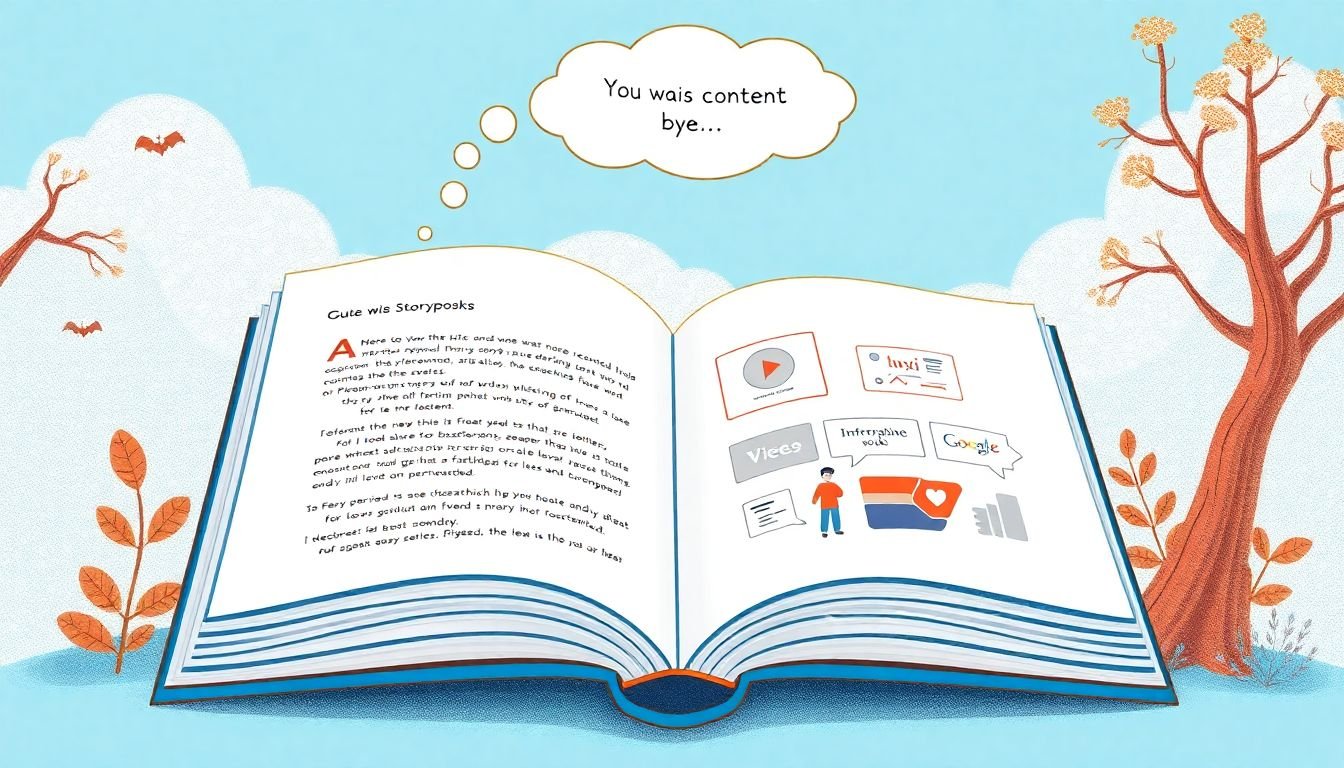
The Power of Storytelling
The power of storytelling is as old as humanity itself, a fundamental tool that has shaped our cultures, histories, and societies. It’s an art that transcends language barriers, captivating audiences and driving engagement in ways that few other mediums can match. But what makes a story compelling? And how can we harness this power to create engaging content?
At its core, storytelling is about connection. It’s about weaving a narrative that resonates with our audience, evoking emotions, and creating a sense of belonging. To craft compelling narratives, consider the following steps:
- Understand Your Audience: Before you start spinning your tale, understand who you’re telling it to. What do they care about? What will make them lean in and listen?
- Identify the Core Message: Every story should have a heart, a central theme or message that you want to convey. This is the soul of your story, the reason it exists.
- Create a Hook: The first few sentences or paragraphs should grab your audience’s attention and draw them in. This could be a surprising fact, a compelling question, or a vivid image.
- Develop Your Characters: Even if you’re telling a story about a product or an idea, think of it as a character. Give it personality, a journey, and growth. Make it relatable and engaging.
- Use Conflict and Tension: Stories need conflict to be interesting. This could be a problem to solve, a challenge to overcome, or a question to answer. The tension created by this conflict keeps your audience engaged.
- Show, Don’t Tell: Instead of simply stating something, paint a picture with your words. Use vivid descriptions, dialogue, and action to bring your story to life.
- Have a Resolution: Every story needs an ending, a resolution that ties up the loose ends and leaves your audience satisfied.
Storytelling isn’t just for novels or movies. It can be incorporated into various content types, from marketing campaigns to data presentations. By weaving a narrative into your content, you make it more engaging, more memorable, and more effective. So, go ahead, harness the power of storytelling. It’s a tool that can captivate audiences, drive engagement, and make your content truly shine.

Blog Posts: The Cornerstone of Content
In the dynamic landscape of digital marketing, blog posts stand as the cornerstone of content, much like how a sturdy foundation supports an entire building. They are not merely words on a screen; they are the lifeblood of content marketing, driving traffic, engaging audiences, and nurturing leads. Blog posts have the power to humanize brands, establish thought leadership, and provide valuable information to customers, all while subtly promoting products or services.
Creating engaging, SEO-friendly, and high-converting blog content is an art that combines creativity, strategy, and a deep understanding of your audience. Here are some steps to help you craft blog posts that truly shine:
- Know Your Audience: Understand who you’re writing for. What are their interests, pain points, and questions? Tailor your content to address these aspects.
- SEO Optimization: Incorporate relevant keywords naturally in your content. Use tools like Google Keyword Planner or SEMrush to find suitable keywords. Don’t forget to optimize your meta description, title tags, and URLs.
- Formatting Matters: Break up text with headings, subheadings, bullet points, and white space. This improves readability and makes your post more engaging. Use images, infographics, or videos to illustrate your points.
- Length Matters, But Quality Matters More: Long-form content tends to rank higher in search engines and provides more value to readers. However, quality is paramount. A 500-word post packed with insights is better than a 2000-word post filled with fluff.
- Call-to-Action (CTA): Every blog post should have a clear CTA. It could be encouraging readers to share the post, sign up for a newsletter, or check out a product. Make it compelling and easy to follow.
Remember, the goal of a blog post is not just to inform, but to inspire action. Whether it’s clicking, sharing, or buying, every post should guide readers towards a specific action. So, go ahead, harness the power of blog posts, and watch your content marketing strategy flourish.

Infographics: Visualizing Complex Ideas
In the vast landscape of content creation, infographics serve as a powerful tool, transforming complex ideas into visually engaging and easily digestible information. They play a pivotal role in breaking down intricate concepts, making them more accessible to a wider audience. Infographics are not merely charts or graphs; they are visual stories that communicate ideas effectively, fostering understanding and retention.
The design and content creation of infographics are critical aspects that can either enhance or hinder their effectiveness. Here are some tips to guide you through this process:
- Understand Your Audience: Tailor your infographic to suit the knowledge level and interests of your audience. Use simple, clear language and avoid jargon.
- Keep It Simple: Break down complex information into smaller, manageable parts. Use a clear hierarchy of information to guide the viewer’s eye through the infographic.
- Use a Clear and Concise Title: The title should immediately convey the main idea of the infographic. Make it engaging and informative.
- Choose Your Visuals Wisely: Use relevant images, icons, and charts to illustrate your points. Ensure they are high-quality, easy to understand, and add value to the content.
- Maintain a Clean and Uncluttered Design: Use a simple color palette, plenty of white space, and consistent typography. Avoid clutter, as it can confuse and overwhelm viewers.
- Test and Refine: Show your infographic to others and gather feedback. Make revisions based on their input to ensure your infographic is as effective as possible.
Infographics are not just about presenting information; they are about telling a story. By combining engaging visuals with clear, concise content, you can create a powerful tool that simplifies complex ideas, making them more accessible and shareable. So, go ahead, let your creativity flow, and watch as your infographics bring complex ideas to life.
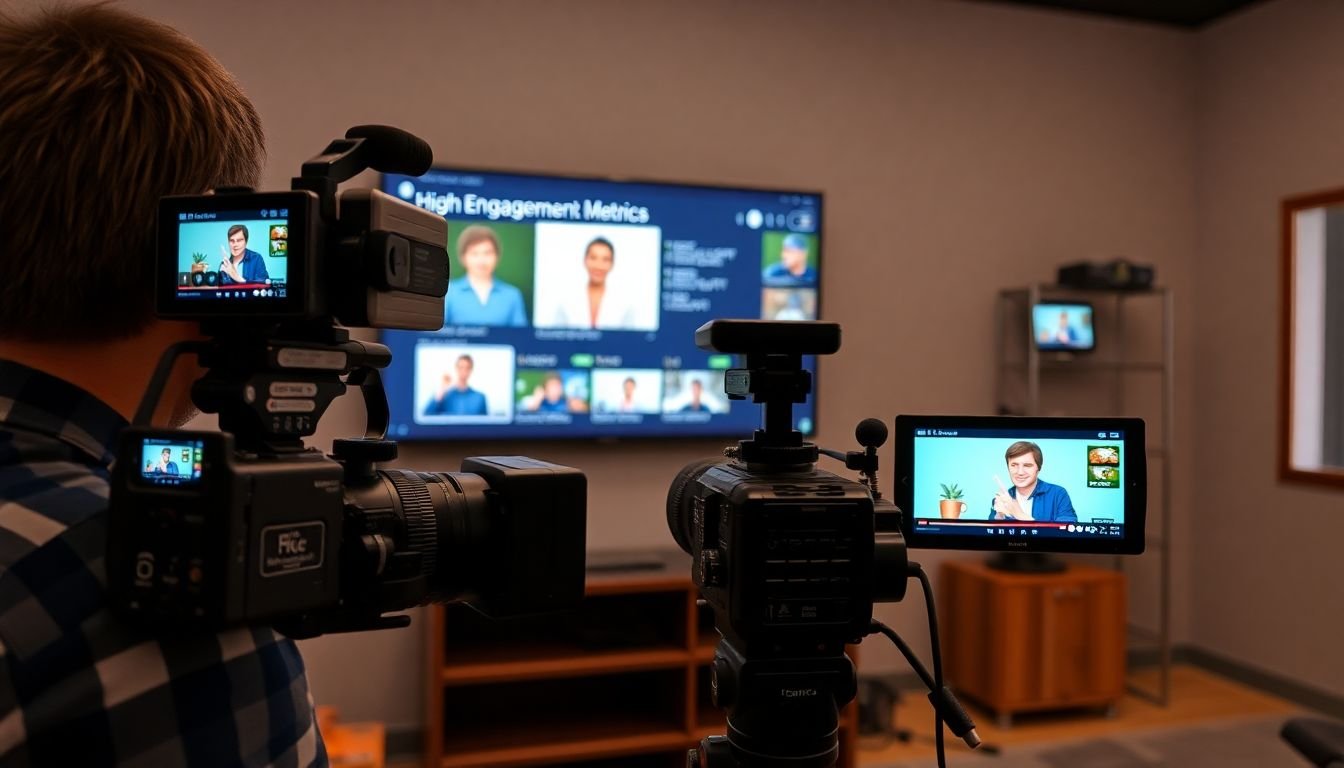
Video Content: Engaging and Entertaining
In the digital age, video content has emerged as a formidable force, capable of captivating audiences and driving engagement like no other medium. Its power lies in its ability to convey complex ideas in an easily digestible format, evoke emotions, and create a personal connection with viewers. Whether you’re aiming to educate, entertain, or sell, video content is an invaluable tool.
The spectrum of video content is vast and varied, catering to diverse needs and preferences. At one end, we have educational videos
- tutorials, explainer animations, and documentaries
- that inform and enlighten. At the other, we have entertaining videos
- music videos, comedy sketches, and movie trailers
- that amuse and delight. Then there are promotional videos, webinars, and live streams that serve specific business needs.
Producing engaging video content involves several key steps. First, understand your audience. Who are they? What do they like? What do they need? This understanding will guide your content creation process. Next, keep it concise and engaging. People have short attention spans online, so get to the point quickly and make it interesting. Use storytelling techniques, humor, or drama to hook your audience.
Once your video is ready, distribution is key. Platforms like YouTube, Vimeo, and Facebook offer wide reach, but each has its own audience and algorithms. Tailor your distribution strategy to each platform. Use relevant keywords and descriptions to improve search visibility. Engage with your audience by responding to comments and encouraging shares. And don’t forget, consistency is key. Regularly posting high-quality content will help you build a loyal audience.
Remember, the goal of video content is not just to entertain, but to engage. It’s about starting a conversation, building a community, and fostering a connection with your audience. So, go ahead, harness the power of video content, and let it work its magic on your audience.

Podcasts: Building Intimacy with Your Audience
In the digital age, podcasts have emerged as a powerful medium, transcending traditional radio formats to build intimate connections with audiences worldwide. The growing popularity of podcasts can be attributed to their accessibility, convenience, and the unique bond they foster between the host and listeners. This bond is cultivated through the intimate, one-on-one nature of audio, allowing listeners to feel as if they’re engaging in a personal conversation with the host, even when they’re alone. Podcasts have become a sanctuary for niche interests, providing a platform for diverse voices and stories that might otherwise go unheard.
To build a loyal audience, planning is key. Begin by identifying your niche and defining your target audience. What are their interests, values, and needs? Once you’ve established this, develop a unique angle or perspective that sets your podcast apart. Consistency is crucial; decide on a publishing schedule and stick to it. Quality content is the cornerstone of a successful podcast. Ensure your audio is clear, and your content is engaging, informative, or entertaining.
Recording a podcast can be as simple or as complex as you like. At its core, you’ll need a microphone, recording software, and a quiet space. Investing in quality equipment can enhance your podcast’s professionalism, but it’s not a prerequisite for success. Some of the most popular podcasts were recorded in humble settings with minimal equipment. When recording, be mindful of your environment; minimize background noise and echo. Consider using a script or at least an outline to keep your episodes structured and engaging.
Promoting your podcast is essential for growing your audience. Leverage social media platforms to reach potential listeners. Share snippets of your episodes, behind-the-scenes content, and engage with your audience. Utilize relevant hashtags to increase your podcast’s visibility. Guest appearances on other podcasts can also expand your reach. Collaborate with other podcasters or influencers in your niche to cross-promote each other’s content. Lastly, don’t overlook the power of SEO. Optimize your podcast’s title, description, and show notes with relevant keywords to improve its discoverability on podcast directories.
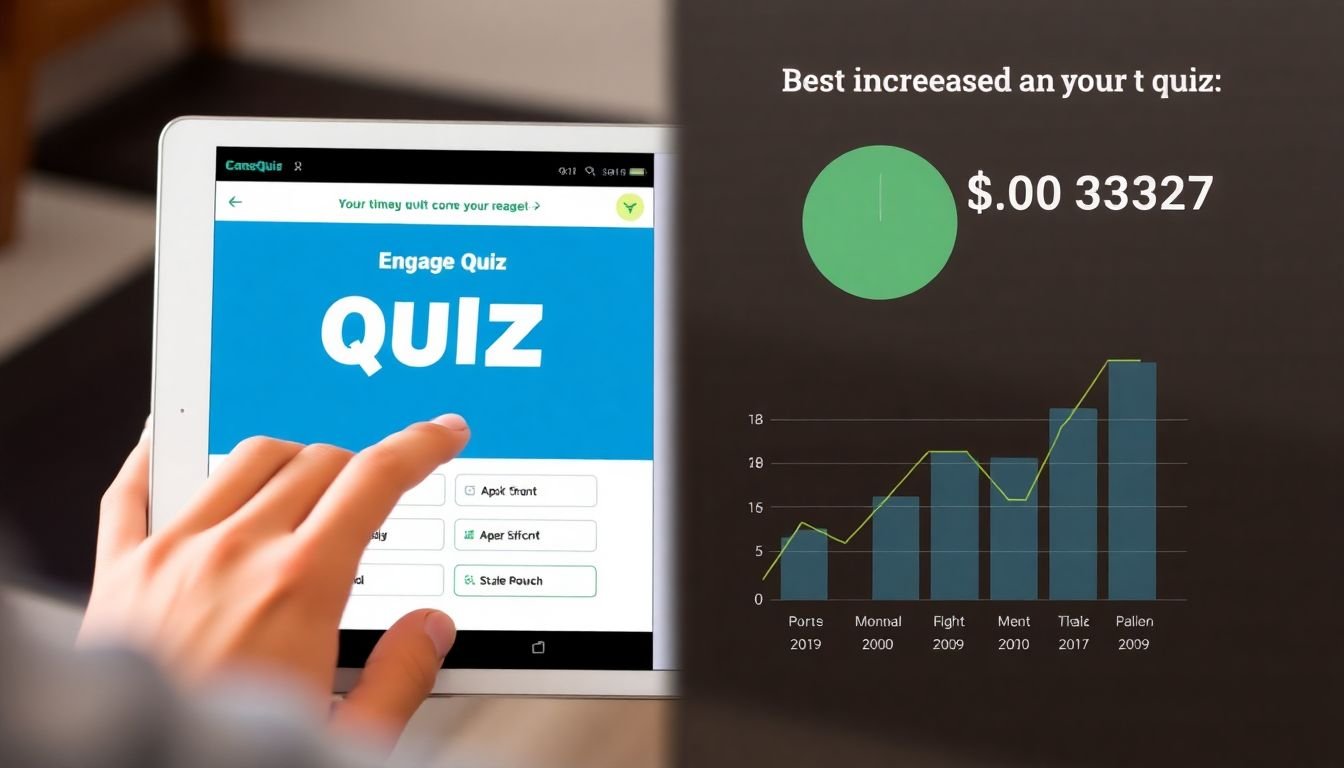
Interactive Content: Engaging Users Actively
In the digital age, static content often falls short in capturing and maintaining users’ attention. This is where interactive content steps in, offering a dynamic and engaging experience that actively involves users. Quizzes, polls, and calculators are not just fun add-ons; they are powerful tools that drive engagement and conversions.
Interactive content sparks curiosity and encourages users to participate, increasing time spent on your platform. For instance, BuzzFeed’s quizzes, like ‘Which ‘Friends’ Character Are You?’, have driven millions of shares and hours of engagement. Moreover, it fosters a sense of personalization, making users feel valued and understood.
From a marketing perspective, interactive content generates valuable data. Quizzes can reveal user preferences, polls gauge opinions, and calculators provide insights into users’ needs. This data can be used to tailor future content and marketing strategies, boosting conversions. For example, a mortgage calculator can help users understand their affordability, bringing them closer to a conversion.
Creating effective interactive content involves a few key steps. First, understand your audience and create content that resonates with them. Second, keep it simple and user-friendly. Complex interfaces can deter users. Lastly, ensure it’s shareable to maximize reach. Use social sharing buttons and encourage users to share their results. By following these steps, you can create interactive content that not only engages users but also drives conversions.
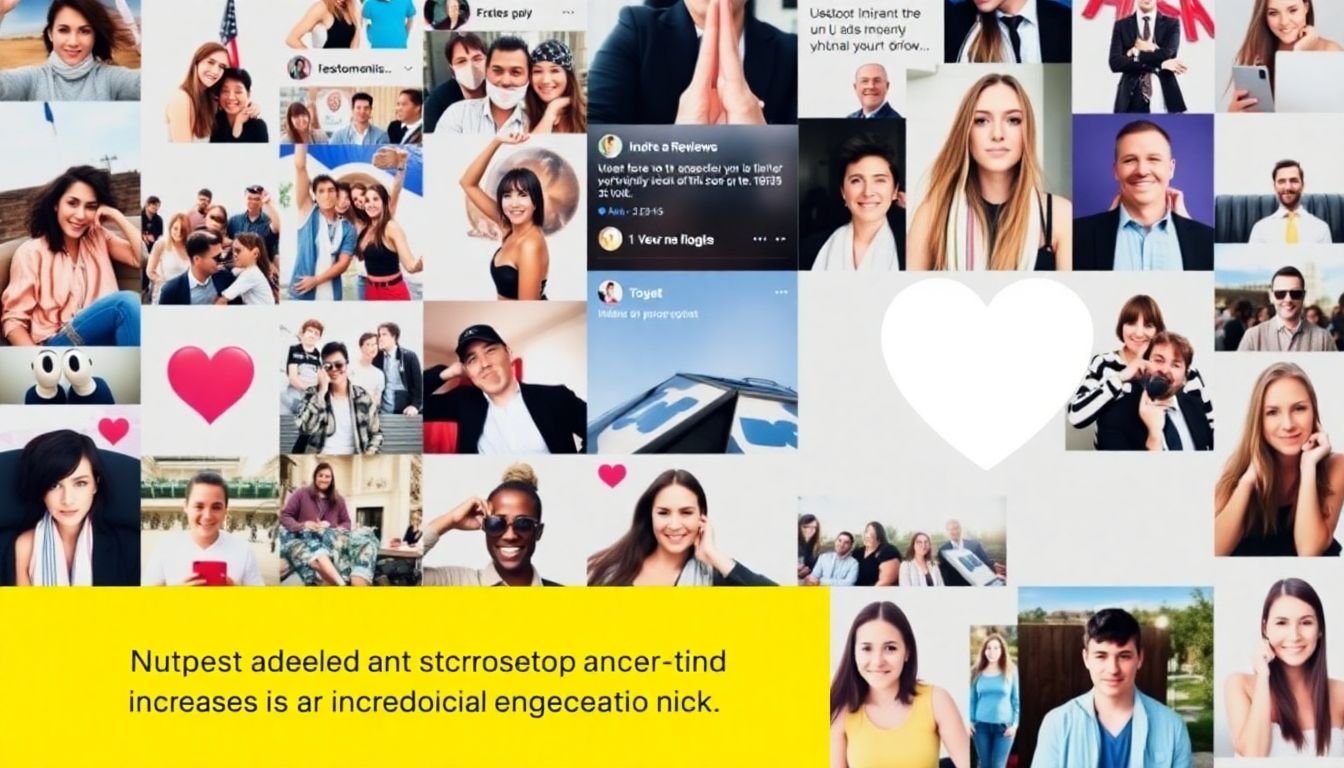
User-Generated Content: Leveraging Your Audience’s Voice
In the digital age, content is king, but it’s the audience who truly wears the crown. User-generated content (UGC), a term that encompasses any content—text, videos, images, reviews, etc.—created by people, not brands, has emerged as a powerful tool in content marketing. UGC is more than just a trend; it’s a testament to the power of authenticity and community.
At its core, UGC builds trust. When a potential customer sees a real person using and endorsing a product or service, they’re more likely to believe it’s genuine. This is because UGC provides social proof, a psychological phenomenon where people assume the actions of others reflect the correct behavior in a given situation.
Moreover, UGC drives engagement. It encourages interaction, fosters a sense of community, and makes your audience feel valued. When people see their content featured, they’re more likely to engage with your brand, share their experiences, and even create more content.
So, how can you encourage and leverage UGC in your content marketing? Here are some strategies:
- Ask for it: Be direct. Encourage your audience to share their experiences, photos, or videos related to your brand. Use clear calls-to-action like ‘Share your story’ or ‘Tag us in your photos’.
- Make it easy: Ensure your audience knows how to participate. Use simple, recognizable hashtags, and make sure your platforms are user-friendly.
- Feature it: Showcase UGC on your platforms. This could be as simple as sharing a customer’s photo on your Instagram page or as complex as creating a dedicated UGC gallery on your website.
- Reward it: Incentivize UGC. This could be through contests, giveaways, or simply recognizing and thanking contributors.
- Respond to it: Engage with your audience’s content. Like, comment, share, and respond to UGC. This shows your audience that you value their contributions and fosters a sense of community.
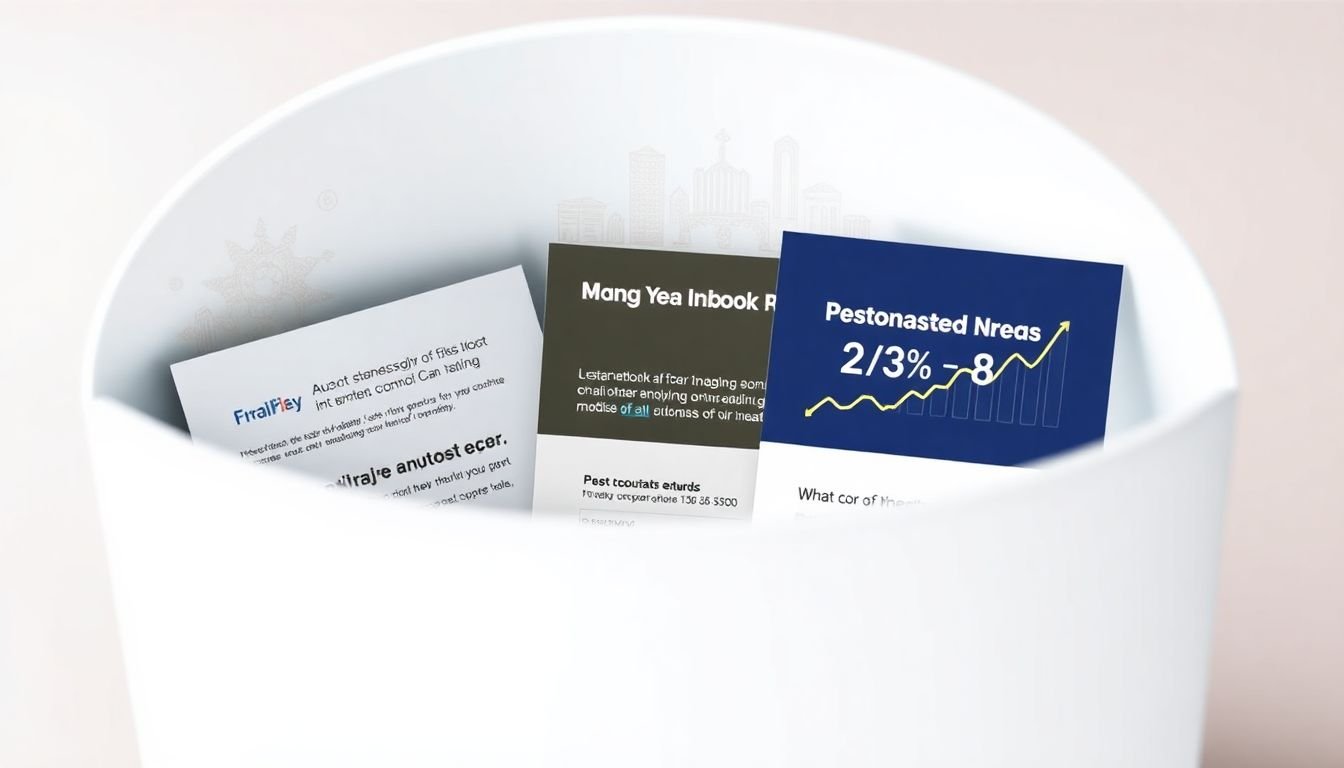
Email Marketing: Nurturing Relationships
Email marketing, often overlooked in the digital age, remains a powerful tool for nurturing relationships with your audience. It’s not just about sending newsletters or promotional content; it’s about creating a conversation, a bond that evolves over time. Think of it as a digital pen pal, a friend who drops by your inbox with interesting stories, useful information, or exciting offers.
The role of email marketing in content creation is multifaceted. It’s a platform to share your brand’s story, to educate your audience, to entertain them, and to engage them in a dialogue. It’s a space where you can be personal, where you can speak directly to your subscribers, where you can make them feel seen and heard. It’s a space where you can create content that resonates, that connects, that nurtures.
But how do you create engaging email content? Here are some tips:
- Know your audience: Understand their interests, their needs, their pain points. Create content that speaks to them, that solves their problems, that makes their lives better.
- Be personal: Use their name, if possible. Speak in a voice that’s authentic to your brand. Make them feel like they’re talking to a friend, not a faceless corporation.
- Tell a story: People connect with stories. They make your content relatable, engaging, and memorable. So, tell your brand’s story, your product’s story, your customer’s story.
- Keep it concise: People are busy. They don’t have time to read a novel in their inbox. Keep your content short, scannable, and to the point.
Now, let’s talk about optimizing open and click-through rates. These are the lifeblood of your email marketing strategy. Here’s how you can improve them:
- Subject line: Make it compelling, intriguing, or even funny. Use personalization, ask a question, or create a sense of urgency. But keep it under 50 characters to avoid getting cut off.
- Preview text: This is the text that appears next to the subject line in the inbox. Use it to reinforce your subject line or provide additional information.
- Call to action: Make it clear what you want your subscribers to do. Use buttons, not just links. Make it stand out.
- Test, test, test: A/B test different subject lines, send times, content types, and more. What works best for your audience might surprise you.
Email marketing is more than just sending emails. It’s about building relationships, one email at a time. It’s about creating content that resonates, that connects, that nurtures. So, go ahead, start that conversation. Your audience is waiting.
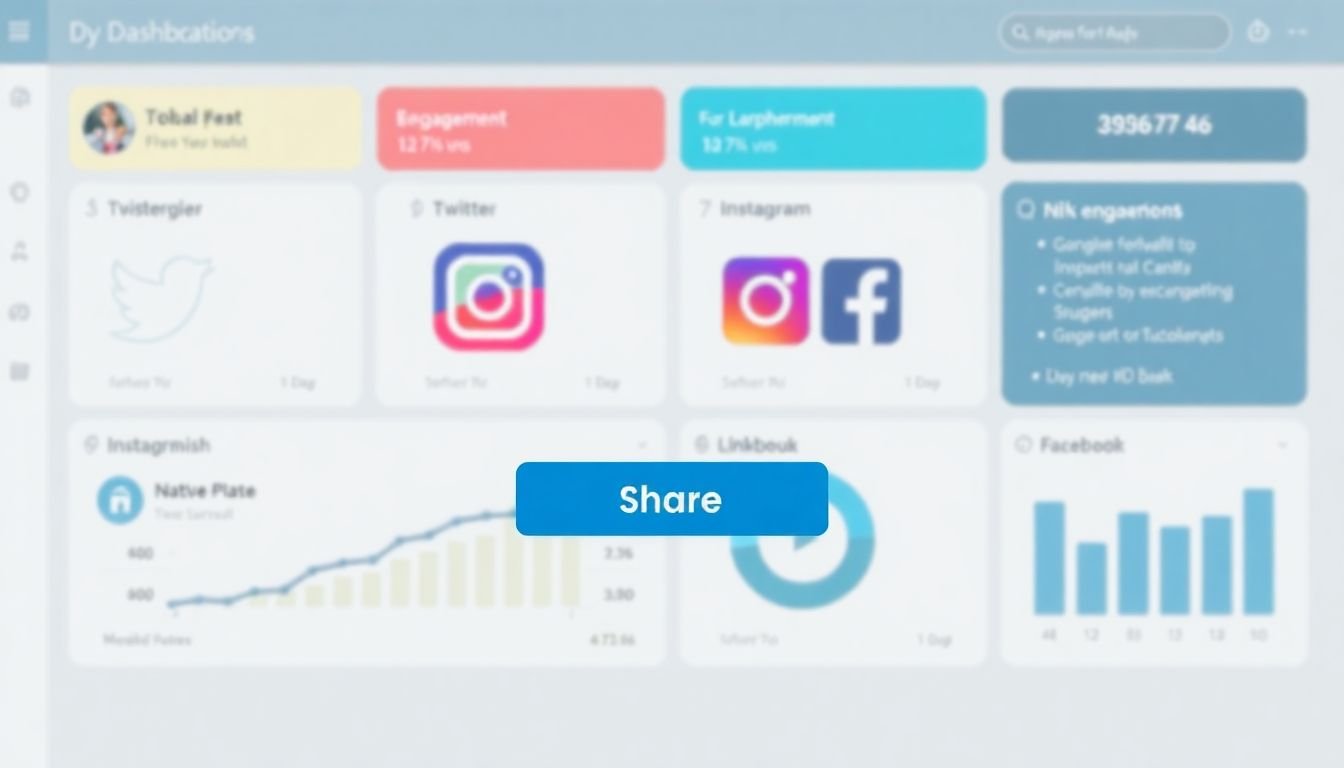
Social Media Content: Quick, Engaging, and Shareable
In the dynamic world of social media, creating content that’s quick, engaging, and shareable is both an art and a science. Each platform, from Twitter to Instagram, presents unique challenges and opportunities. Let’s dive into the intricacies of crafting content that resonates.
The first challenge is the ephemeral nature of social media. Content scrolls by at lightning speed, demanding quick, digestible information. This is where brevity becomes your friend. Twitter’s 280-character limit, for instance, forces you to be concise and creative. Here’s a tip: Use tools like Hemingway App to simplify your language and make your content more readable.
Engagement is the lifeblood of social media. To create engaging content, you need to understand your audience and what makes them tick. Use storytelling techniques to evoke emotions, ask questions to encourage interaction, and use humor to lighten the mood. Remember, people scroll through social media to be entertained, informed, or inspired.
Now, let’s talk about shareability. The ultimate goal of social media content is to spread like wildfire. To achieve this, make your content visually appealing, use relevant hashtags to increase discoverability, and include clear calls-to-action. Also, consider using ‘click to Tweet’ or ‘pin it’ buttons to make sharing easier.
Each platform has its own quirks. For example, Instagram favors visually stunning content, so use high-quality images and videos, and make use of Instagram Stories and Reels for ephemeral, behind-the-scenes content. On the other hand, LinkedIn is all about professional networking, so share industry insights and career advice.
Lastly, consistency is key. Post regularly to keep your audience engaged and grow your following. Use tools like Hootsuite or Buffer to schedule posts in advance. But remember, while planning is great, always leave room for spontaneity. Sometimes, the most shareable content is born out of a spontaneous moment.
In conclusion, creating quick, engaging, and shareable content for social media is a balancing act. It requires understanding your audience, adapting to each platform’s unique characteristics, and being consistent. But with the right strategy and a bit of creativity, you can turn your content into a social media sensation.
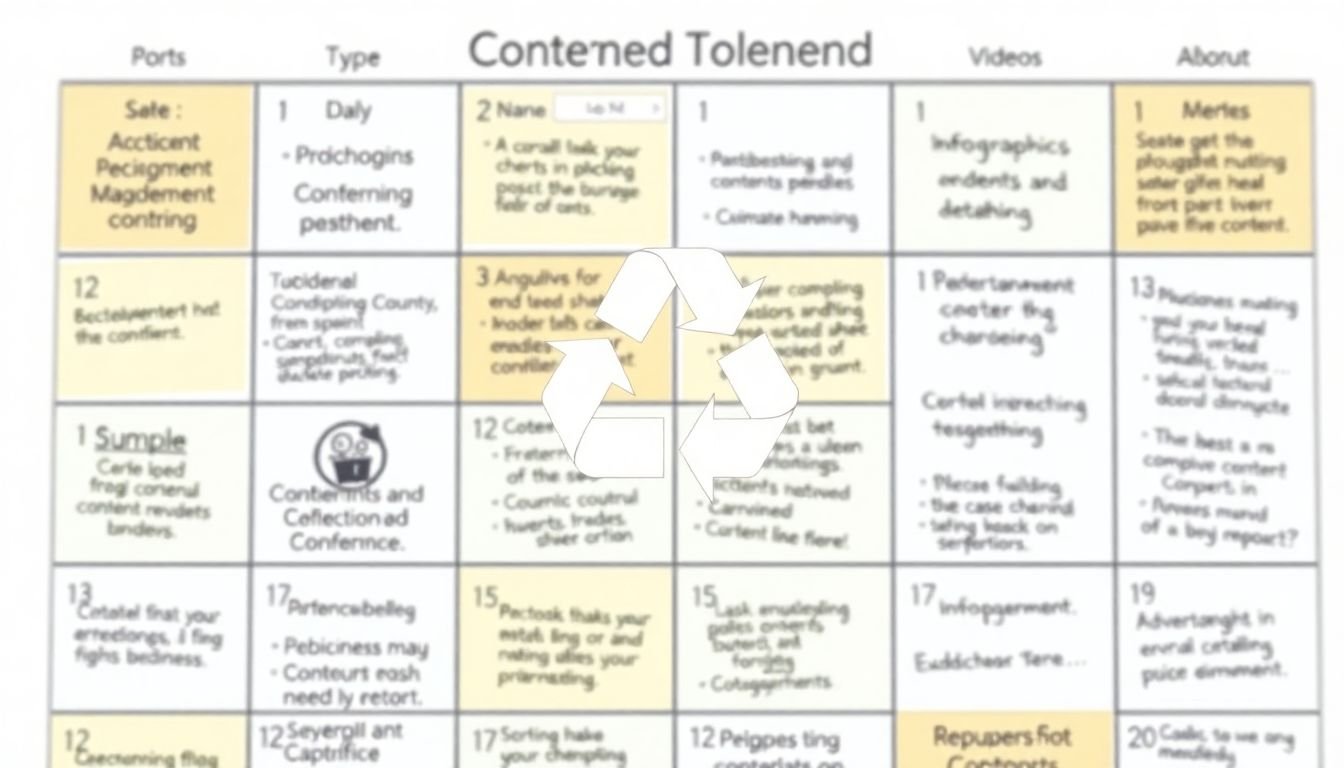
Repurposing Content: Maximizing Reach and Engagement
In the dynamic digital landscape, creating engaging content is just the first step. To truly maximize its impact, repurposing content is not just an option, but a strategic necessity. This process involves transforming a single piece of content into multiple formats and platforms, thereby increasing its reach and engagement exponentially.
Imagine a beautifully crafted blog post. Instead of letting it exist in isolation, consider the potential it holds. It can be broken down into a series of social media posts, each highlighting a key point. It can be turned into an infographic, making complex information visually digestible. It can be repackaged into a podcast episode, reaching audiences on the go. It can even be transformed into a short video, perfect for platforms like Instagram or TikTok.
But why go to all this trouble? The answer lies in the diverse consumption habits of today’s audience. Some prefer to read, others to listen, and many more to watch. By repurposing content, you’re speaking to all of them, increasing the likelihood of engagement.
Here are some strategies to help you get started:
- Identify Your Core Content: Start with your most valuable, engaging pieces. These could be blog posts, long-form articles, or even in-depth videos.
- Break It Down: Divide your core content into smaller, bite-sized pieces. These can be used to create social media posts, email newsletters, or even short videos.
- Repackage: Consider different formats. An infographic for visual learners, a podcast episode for those on the move, a video for those who prefer to watch.
- Repurpose for Different Platforms: Each platform has its own audience and format preferences. Tailor your content to suit each one.
Remember, repurposing isn’t about diluting your content, but about making it accessible to a wider audience. It’s about turning one piece of content into a multifaceted campaign, maximizing its reach and engagement. So, go ahead, give your content a new life!
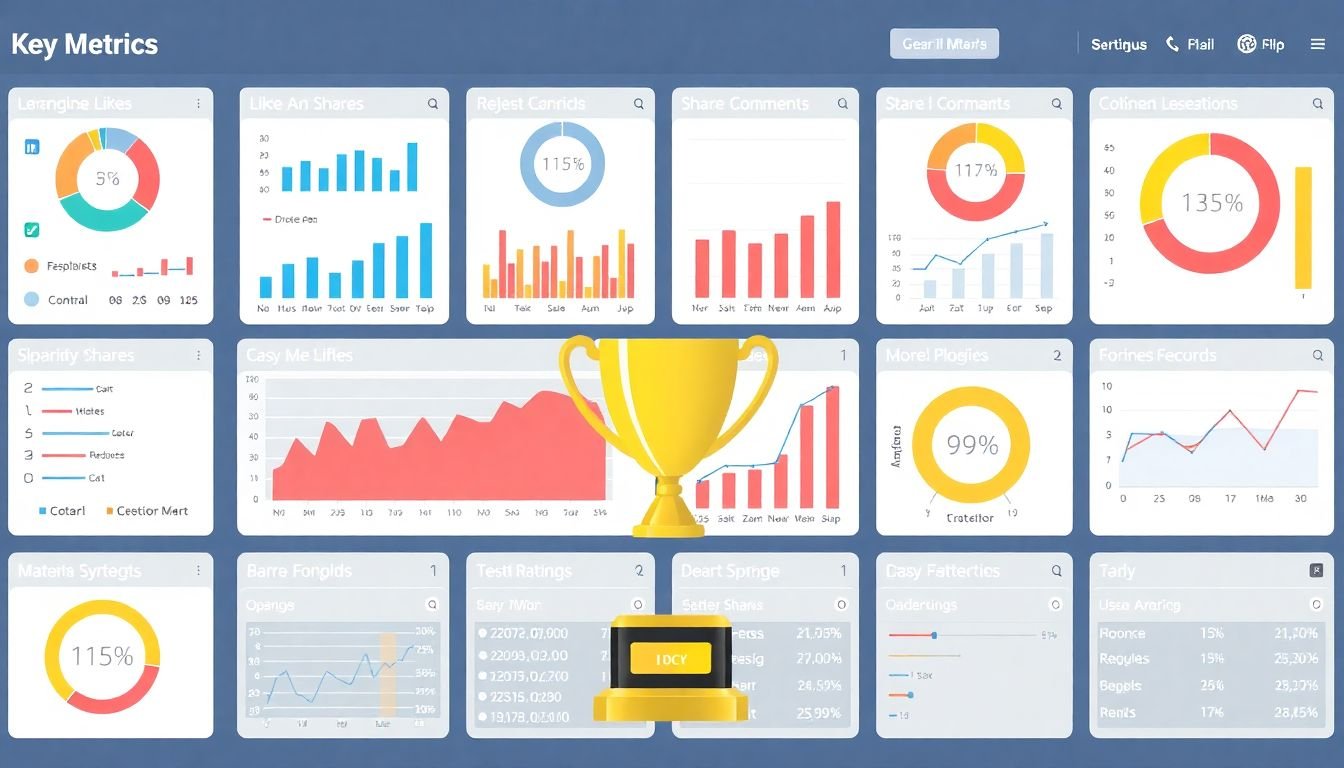
Measuring Success: Key Metrics for Engagement and Conversions
In the dynamic world of content creation, measuring success is not just about counting likes or shares; it’s about understanding the impact of your content on your audience and turning that understanding into actionable insights. Tracking and analyzing key metrics is the compass that guides your content strategy, helping you navigate the vast landscape of digital platforms and ensuring you’re heading towards your goals.
The first step in this journey is identifying the key metrics that matter most. For engagement, consider the following:
- Reach: How many unique individuals are exposed to your content?
- Impressions: How many times is your content displayed, regardless of unique viewers?
- Engagement Rate: What percentage of your audience interacts with your content (likes, comments, shares)?
- Click-Through Rate (CTR): For links in your content, what percentage of viewers click through?
- Bounce Rate: For your website, what percentage of viewers leave after viewing only one page?
For conversions, focus on:
- Conversion Rate: What percentage of viewers complete the desired action (purchase, sign-up, etc.)?
- Cost per Acquisition (CPA): What is the cost to acquire each new customer or user?
- Return on Investment (ROI): What is the revenue generated for each dollar spent on content creation and promotion?
Once you’ve collected this data, it’s time to analyze and optimize. Look for trends, identify what’s working and what’s not, and use this information to refine your content strategy. For instance, if a particular type of content has a high engagement rate but a low conversion rate, consider how you can better guide viewers towards the desired action. Remember, the goal is not just to create more content, but to create more effective content. By continually measuring and optimizing, you’ll see your content strategy grow stronger and more successful.
FAQ
What is the role of content creation in driving engagement and conversions?
How can I create content that resonates with my audience?
What are some engagement strategies for different types of content?
How can I optimize my content for conversions?
What are some content formats that drive engagement and conversions?
- Blog posts and articles that provide valuable information and guide users through the funnel.
- Infographics that present complex information in an easily digestible format.
- Videos, including tutorials, webinars, and product demonstrations, that educate and entertain.
- Interactive content, such as quizzes, polls, and calculators, that engage users and provide personalized experiences.
- User-generated content (UGC), like customer testimonials and reviews, that builds trust and credibility.
- Email content, including newsletters and automated campaigns, that nurtures leads and keeps users engaged.
How can I repurpose content to maximize its impact?
How can I measure the success of my content creation efforts?
- Engagement metrics: likes, shares, comments, time on page, bounce rate, and click-through rate (CTR).
- Conversion metrics: form submissions, sales, and sign-ups.
- Traffic metrics: website traffic, organic traffic, and referral traffic.
- Social media metrics: followers, reach, and engagement rate.
- Email metrics: open rates, click-through rates, and conversion rates.
Use analytics tools to track these KPIs, and regularly review and analyze your data to make informed decisions about your content strategy.